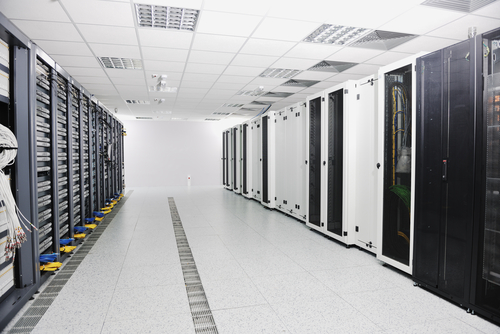
The New York Times’ latest expose takes on data centers, but the Gray Lady’s investigation has prompted its own criticism. While the paper correctly noted that there's a backend cost attached to the storage of photos, cat videos, and old shopping lists, many critics are taking issue with how the
Times addresses the issue of those data centers’ power consumption. Sunday’s story, which drew its data from industry experts, focuses on two key points: first, “worldwide, [data centers] use about 30 billion watts of electricity, roughly equivalent to the output of 30 nuclear power plants.” Second, a study commissioned by the consulting group McKinsey & Co. found that, on average, data centers were using only 6 percent to 12 percent of the electricity powering their servers to actually perform computations; the rest, the study claimed, was being used to “idle” servers in case there was a surge of demand. The
Times study reportedly sampled about 20,000 servers in about 70 large data centers. While the
Times’ contention that the majority of data-center operators prefer secrecy is probably accurate, this industry is public enough that the paper’s approach to the article exposes a few puzzling choices. “Wow. So much assertion with so little facts. Wow,” Michael Gartenberg, an analyst for Gartner,
tweeted in reference to the report. Meanwhile, Dan Woods at
Forbes also contributed his own criticism. Here are just five areas where the
Times made some dubious choices.
1.) Blast from the past. The anecdote about Facebook ransacking a local Walgreens for cooling fans vividly illustrates the challenges of cooling a data center. But it also took place in 2006—which, as the
Times should realize, was ages ago in tech time. “This article leaves out most of the work ongoing over the last several years to ameliorate the problems it describes,” noted a commenter on the
Times article, noted. “For example, it's hard to believe that the author toured the Yahoo data center in Santa Clara without finding out that Yahoo has two newer self-built data centers in Nebraska and upstate New York built for efficiency and reduced need for air conditioning, and that Yahoo applications are being migrated there and older data centers' use reduced or eliminated.”
2.) The lack of PUE. Power Usage Effectiveness (PUE) is
the metric of the data center industry. The
Times article could have explained that PUE data, as reported by the Uptime Institute, has improved from 2.5 last year to between 1.8 and 1.89 this year—as much as a 28 percent drop in the right direction. Granted, Uptime notes that of the “smallest deployments, defined as 500 servers or less, nearly half aren’t measuring PUE at all.” While the issue isn’t black and white, and there’s definitely room for improvement—which is being made by ultra-low PUE data centers designed by
Facebook, Google, and NREL—the failure to talk PUE in detail is still an almost inexcusable omission by the
Times.
3.) Virtualization’s short shrift. “Those data centers would rely heavily on a technology called virtualization, which in effect allows servers to merge their identities into large, flexible computing resources that can be doled out as needed to users, wherever they are,” the
Times reports. Then comes the real head-scratcher: “Others express deep skepticism of the cloud, saying that the sometimes mystical-sounding belief in its possibilities is belied by the physicality of the infrastructure needed to support it.” And an earlier statement cites a Stanford research fellow Jonathan G. Koomey, who claims that many companies that manage their own data centers are unfamiliar with or distrustful of virtualization. Did the
Times really uncover a legion of IT execs and CIOs that don’t really understand what virtualization does? That’s somewhat hard to believe. “Overly simplistic introduction of the data center industry,” noted
a Times commenter named Mark Abbott. “The McKinsey study appeared to focus solely on corporate data centers. This narrow focus would've been fine in 2002, but, by 2012, the playing field changes dramatically. Virtualization has provided tangible benefits through consolidation in reducing the number of running physical servers, often by a factor of 10 or more.”
4.) The Open Compute Initiative. Since the
Times interviewed Facebook, did no one from the organization inform the paper about the work being done to lower PUE values by sharing information about the design, cooling, and implementation of custom servers, all designed to save power?
5.) New “green designs.” Unfortunately, there aren’t too many locations in the United States with the environment of Finland or Iceland, where many modern data centers can be passively cooled by the near-Arctic conditions. Then again, Facebook’s efforts in Prineville, Ore., and the solar array Apple built for its Maiden, N.C. data center should have merited a mention. Smaller data center operators and the executives that run them may not have the financial incentive to “green” their data center designs, but industry leaders have already recognized that a green data center helps both the environment as well as their own bottom line. Of course, this leaves out the growing push toward
low-power servers powered by ARM chips as well as power-optimized X86 architectures, pricy but green) solid-state drives, and federal initiatives to consolidate data centers. The Times claims that this article is the first in a series; it will need to raise the bar in subsequent pieces if it wants to be taken seriously.
Image: .shock

